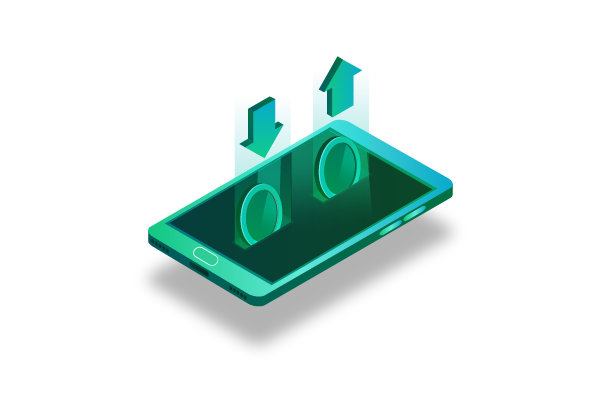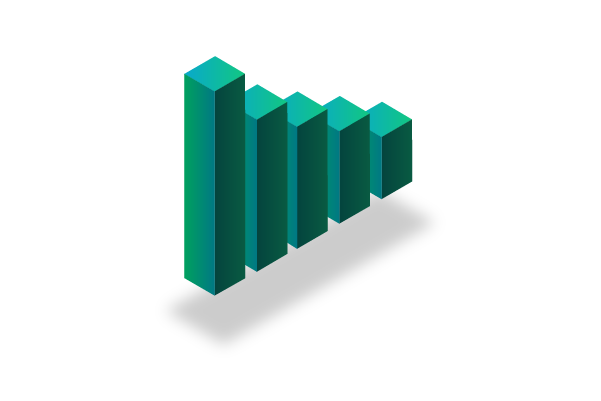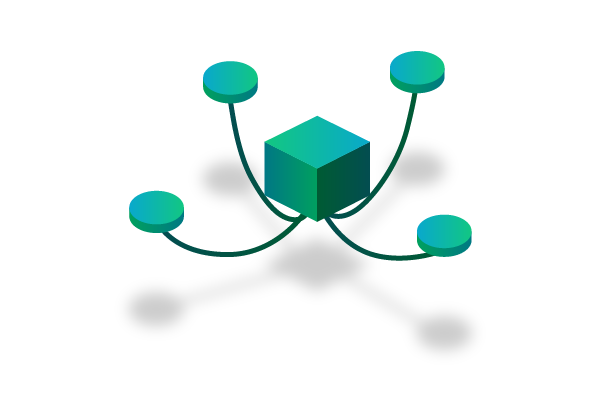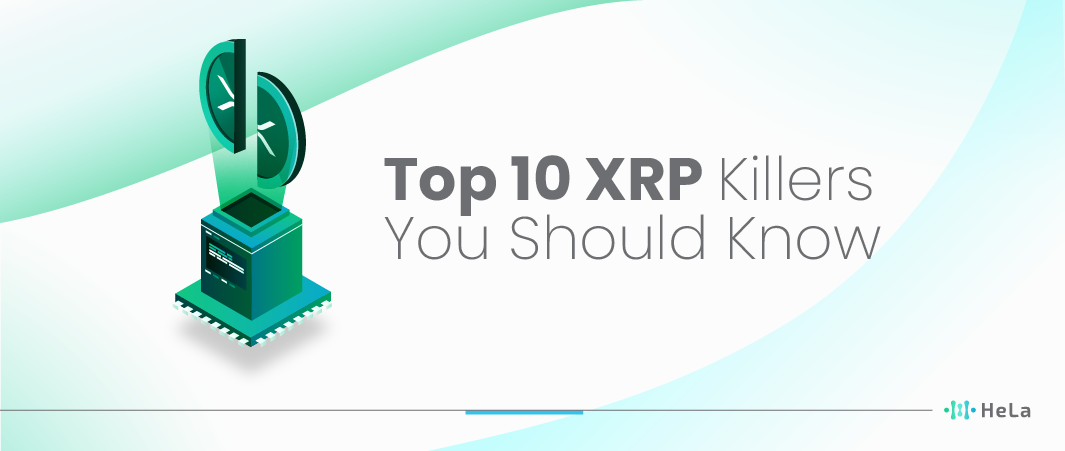In the ever-evolving world of cryptocurrency, change is the only constant. Ripple’s XRP has long been a stalwart in the digital finance landscape, known for its rapid transaction speeds and widespread adoption in cross-border payments. However, as we venture into 2025, a new breed of cryptocurrencies, often dubbed ‘XRP Killers,’ is emerging, poised to challenge the status quo. This article delves into the top ten contenders that are making waves in the crypto space, offering innovative solutions and promising potential.
To appreciate the significance of these emerging ‘XRP Killers,’ one must first understand the appeal of XRP itself. XRP has carved a niche in the crypto market by facilitating fast, low-cost international transactions, a game-changer for banks and financial institutions. Its consensus protocol differs significantly from the traditional proof-of-work mechanism, allowing for higher scalability and efficiency. However, as technology advances, new players are entering the arena, equipped with even more sophisticated and diverse capabilities.
The cryptocurrencies dubbed as ‘XRP Killers’ aren’t just mere imitators; they bring unique value propositions to the table. These contenders are evaluated based on their transaction speed, scalability, cost-effectiveness, innovation in their underlying technology, and their potential to disrupt the traditional financial systems. As we explore these upcoming stars, we’ll delve into how each of them stands to challenge XRP’s dominance in specific areas of the digital finance world.
Top 10 XRP Killers to Know in 2025

In 2025, several new cryptocurrencies are gaining prominence, challenging the market position of XRP. These ‘Rising Stars’ are not only technologically advanced but also offer unique features like improved decentralization, energy efficiency, or novel consensus algorithms. They are attracting significant attention for their innovative approaches to blockchain technology and potential to disrupt traditional financial systems. Among these, cryptocurrencies are particularly noteworthy.
1. HeLa
HeLa envisions Web 3.0 as a realm where individuals have complete control over their digital assets and data, empowering them like never before. At the heart of this vision lies an innovative decentralized identity management system that not only fosters trust and security in online transactions but also prioritizes the user’s needs, thus elevating the overall digital experience and imbuing a profound sense of ownership within the blockchain technology space.
What sets Hela apart from the competition is its commitment to cutting-edge privacy protection measures. It adeptly strikes a balance between privacy and transparency, ensuring compliance with regulatory standards, which positions it as a formidable contender to the likes of Sola.
Operating as a Layer 1 blockchain protocol, Hela holds the potential to catalyze a revolution in various sectors, including finance and supply chain management, ultimately reshaping how interactions unfold in the decentralized landscape of Web 3.0. In essence, Hela is poised to redefine the way we engage with digital assets and data in the evolving era of the internet.
2. NEAR Protocol
NEAR Protocol, frequently referred to as one of the potential “XRP Killers,” distinguishes itself with its exceptional user-friendliness and notable scalability. This blockchain platform focuses on providing a seamless and straightforward user experience, coupled with rapid transaction processing capabilities.
Central to NEAR’s innovative approach is its distinctive sharding mechanism. This system segments the network into smaller, more manageable units, which significantly boosts efficiency and scalability. Such a structure is particularly advantageous for applications requiring swift transaction processing and broad accessibility. As a result, NEAR Protocol emerges as a strong contender in the blockchain arena, offering promising features that could challenge established players in the field.
Also Read: Best Next-Gen Layer 1 to Watch in 2025
3. Elrond
Elrond, often hailed as one of the potential XRP Killer, has made substantial advancements in the blockchain industry by introducing two groundbreaking technologies: the Adaptive State Sharding system and the Secure Proof of Stake consensus mechanism. These innovations have propelled Elrond into a prominent position within the blockchain ecosystem, offering an exceptional combination of scalability and security that benefits its user base.
The Adaptive State Sharding system implemented by Elrond is a game-changer, allowing the network to process multiple transactions simultaneously. This boosts transaction speed and optimizes resource utilization, resulting in a more efficient blockchain platform. It’s akin to dividing the blockchain into smaller, manageable shards, each capable of handling its own set of transactions, thus significantly enhancing overall performance.
In addition to Adaptive State Sharding, Elrond has integrated the Secure Proof of Stake consensus mechanism, further fortifying the network’s integrity. This consensus mechanism ensures that validators on the network have a financial stake in maintaining the blockchain’s security and reliability. Validators are incentivized to act honestly and protect the network against malicious activities, making Elrond a robust and secure platform for various blockchain applications.
The fusion of these two innovative technologies positions Elrond as a formidable contender in the competitive blockchain landscape. Its ability to provide both efficiency and safety is a testament to its commitment to delivering a top-tier blockchain experience for its users. With its remarkable scalability and security features, Elrond is poised to play a pivotal role in shaping the future of blockchain technology.
4. Algorand
Algorand, a blockchain platform often referred to as one of the “XRP Killers,” distinguishes itself through its strong academic foundation and innovative approach to blockchain technology. This platform is deeply rooted in academic research, placing a high emphasis on thorough and methodical development. This focus has resulted in a unique blend of reliability and cutting-edge innovation that appeals to a wide range of users and developers in the blockchain space.
One of the key features that set Algorand apart from its competitors, including XRP, is its capacity to achieve instant transaction finality. This means that transactions on the Algorand network are completed and irrevocable almost immediately, a critical attribute for applications that require rapid and secure transaction processing. This aspect of Algorand’s design is particularly beneficial for financial applications and other sectors where the speed and security of transactions are paramount.
In addition to its speed, Algorand is also designed with a focus on long-term scalability. The platform addresses some of the most pressing challenges faced by blockchain networks today, particularly those related to the growth and efficiency of these networks. By prioritizing scalability, Algorand aims to accommodate an increasing number of users and transactions without compromising on performance or security.
This dual commitment to both speed (through instant transaction finality) and sustainability (via scalable solutions) positions Algorand as a significant and innovative player in the blockchain industry. Its unique approach and features make it a strong contender and an alternative to more established platforms like XRP, offering new possibilities and solutions in the evolving world of blockchain technology.
5. Harmony (ONE)
Harmony, identified as “ONE” in the blockchain sector, is recognized for its exceptional capacity to manage a large number of transactions and operations efficiently. The cornerstone of Harmony’s effectiveness is its pioneering deep sharding technology. This technology divides the blockchain’s workload into smaller, more manageable segments, enhancing overall performance.
This strategy sets Harmony apart in the blockchain landscape, especially in the realm of decentralized applications (dApps) and cross-chain interoperability. Due to its scalability and high-efficiency levels, Harmony is often viewed as a strong competitor to platforms like XRP, sometimes even referred to as one of the “XRP Killers.” Its ability to handle growing demands in the blockchain space makes it an attractive option. Developers and users are drawn to Harmony as it opens up new avenues for innovation and growth within the decentralized ecosystem. The platform’s unique approach to handling blockchain transactions and operations positions it as a significant player in the future of blockchain technology.
6. Tezos
Tezos is often mentioned alongside “XRP Killers,” a term used to describe blockchain platforms that could potentially rival or surpass XRP in terms of technology and adoption. Both Tezos and XRP share a significant focus on formal verification, a method that employs mathematical proofs to ensure the accuracy and security of smart contracts and protocol updates. This approach is critical in the blockchain world, where the integrity and reliability of contracts are paramount.
Furthermore, Tezos emphasizes on-chain governance, a feature that allows stakeholders to propose and vote on updates directly on the blockchain. This process eliminates the need for complex forks, which can be divisive and technically challenging. On-chain governance reflects a commitment to a more democratic and decentralized decision-making process, which is a core principle of XRP as well. This similarity in ethos and technological approach sets up an intriguing dynamic between Tezos and XRP, highlighting the evolving nature of blockchain technology and its diverse applications. As these platforms continue to develop and innovate, they contribute to the broader ecosystem of blockchain technology, offering different solutions and perspectives on how decentralized platforms can operate and evolve.
7. Avalanche
Avalanche is emerging as a notable player in the blockchain arena, particularly for addressing the critical issue of scalability that plagues many networks. This platform distinguishes itself with an innovative consensus mechanism that enables exceptionally fast transaction processing. This feature has garnered significant interest from various blockchain projects that struggle with scalability challenges.
Often referred to as a “XRP Killer,” Avalanche’s appeal is growing among developers and businesses. They are drawn to its unique and efficient approach for handling large-scale projects. The platform’s capacity to manage substantial transaction volumes without compromising speed positions it as an increasingly popular choice in the cryptocurrency world. This makes Avalanche not just an alternative but a potentially superior option for those looking to develop on a robust and scalable blockchain infrastructure.
8. Solana
Solana, often hailed as a leading contender among the “XRP Killers”, is swiftly capturing the spotlight in the realm of blockchain technology. This surge in attention can be attributed to its outstanding speed and efficiency, characteristics that have made it a preferred choice for decentralized applications (dApps) and DeFi ventures. Solana stands out in the blockchain arena, primarily due to its rapid transaction processing times and impressive throughput capabilities.
The platform’s exceptional performance not only distinguishes it but also positions it as a strong contender in the blockchain landscape. This makes it an enticing prospect for both developers and users. Solana’s core focus on scalability and its commitment to maintaining low transaction costs have been instrumental in attracting numerous participants to its ecosystem. Furthermore, its potential to challenge established blockchain projects such as XRP has firmly established it on the radar of investors and blockchain enthusiasts alike. Solana’s rise is indicative of its promising future in the ever-evolving blockchain industry.
9. Ethereum 2.0
Ethereum 2.0 represents a significant evolutionary leap for the Ethereum blockchain, often touted as a formidable contender in the “XRP Killers” category. This transformative upgrade marks a departure from the current resource-intensive mining process, pivoting towards a more environmentally conscious consensus mechanism known as proof-of-stake (PoS).
The adoption of PoS not only enhances Ethereum’s transaction handling capacity and scalability but also addresses environmental concerns by drastically reducing its energy consumption. In essence, Ethereum 2.0 aligns itself with sustainability principles akin to those championed by XRP, another prominent blockchain platform renowned for its PoS system. These strategic alterations are poised to enhance Ethereum’s efficiency and ecological footprint, bringing it closer to the vision espoused by XRP.
10. Polkadot
Polkadot, often referred to as “XRP Killer”, is a blockchain platform designed to function as a vital bridge between diverse blockchain networks. Its primary purpose is to facilitate communication and data sharing among these distinct blockchains, reducing the reliance on trust as a prerequisite for interaction.
Imagine Polkadot as a friendly intermediary within the realm of digital currencies. It competes directly with XRP because both platforms share a common mission: to ensure the seamless integration of various blockchain networks. By achieving this goal, they aim to create a more interconnected and efficient ecosystem for cryptocurrencies and smart contracts. In essence, Polkadot plays a pivotal role in realizing this vision of a harmonized and interconnected world of blockchain technology and digital assets.
Innovations in Transaction Speed and Cost

One of the main appeals of XRP is its transaction speed and low cost. XRP has historically been known for its ability to facilitate swift cross-border transactions at a fraction of the cost compared to traditional banking systems. However, the cryptocurrency landscape is constantly evolving, and new entrants like HeLa are setting new benchmarks in these areas.
HeLa, for instance, has leveraged cutting-edge layer-2 solutions, such as state channels and sidechains, to enable near-instantaneous transactions at significantly lower fees. These innovations not only rival XRP’s transaction speed but also surpass it in terms of cost-efficiency. As a result, HeLa has gained traction among users and institutions looking for lightning-fast, cost-effective transactions.
These advancements in transaction speed and cost-effectiveness by HeLa highlight the dynamic nature of the cryptocurrency market. As the competition intensifies, users and institutions have an array of options to choose from, each with its own set of features and advantages. This healthy competition not only benefits consumers but also encourages further innovation in the blockchain and cryptocurrency space.
The Scalability Factor

Scalability is a critical factor in the widespread adoption of any cryptocurrency. In today’s rapidly evolving digital landscape, cryptocurrencies like HeLa and Solana are demonstrating remarkable scalability, which could potentially outperform XRP.
The concept of scalability in cryptocurrencies revolves around their ability to handle a high volume of transactions efficiently and cost-effectively. As the popularity of cryptocurrencies continues to grow, so does the demand for faster and more scalable solutions.
HeLa and Solana have taken significant strides in addressing this challenge. They are leveraging cutting-edge technologies such as sharding and state channels, which are poised to revolutionize the way blockchain networks operate.
Sharding, for instance, involves breaking down the blockchain into smaller, interconnected pieces called shards. Each shard can process transactions independently, significantly increasing the network’s capacity to handle a larger number of transactions simultaneously. This innovative approach not only enhances scalability but also improves the overall speed and efficiency of the blockchain.
State channels, on the other hand, enable off-chain transactions between users. By conducting transactions off the main blockchain, these cryptocurrencies can reduce congestion and lower transaction fees, making them more accessible and cost-effective for everyday users and businesses alike.
These advancements in scalability are crucial for mainstream adoption and to accommodate the growing demand in the digital economy. As more industries and applications look to integrate blockchain technology, the ability to scale efficiently becomes a decisive factor in determining which cryptocurrencies will thrive in the long term.
HeLa and Solana are at the forefront of scalability innovations, making them strong contenders in the race for widespread adoption and dominance in the digital financial ecosystem. Their ability to handle large transaction volumes, thanks to technologies like sharding and state channels, positions them as potential competitors to XRP and other cryptocurrencies seeking to establish themselves as the go-to solutions for digital payments and beyond.
The Role of Community and Adoption

In the ever-evolving world of cryptocurrencies, the success of a particular digital asset is often intricately tied to two key factors: the strength of its community and the rate of its adoption. These factors play a pivotal role in determining the long-term viability and relevance of a cryptocurrency within the highly competitive landscape. In this context, let’s delve deeper into the significance of community and adoption and how they can challenge the dominance of cryptocurrencies like XRP.
Community Building
A thriving and engaged community is the lifeblood of any cryptocurrency. Cryptocurrencies like HeLa have been actively cultivating strong and supportive communities around their projects. These communities comprise passionate advocates, enthusiasts, and investors who not only believe in the technology but actively promote its use and adoption. The dynamics of this community-building effort are multifaceted:
- Educational Initiatives: Cryptocurrency projects are increasingly focusing on educational outreach to help potential users and investors understand their technology. They host webinars, workshops, and online forums to answer questions, clarify misconceptions, and foster a sense of inclusivity.
- Transparency and Governance: Transparent decision-making processes and clear governance structures contribute to a sense of trust within the community. Many projects involve community members in decision-making through voting mechanisms, ensuring that the interests of the community are represented.
- Developer Engagement: Encouraging developers to contribute to the project’s codebase is essential for its growth. By providing the necessary tools, documentation, and incentives, cryptocurrencies can attract talented developers and foster innovation within their ecosystems.
Adoption Strategies
A cryptocurrency’s adoption rate is another critical determinant of its success. To challenge the dominance of established players like XRP, contender like HeLa are employing various strategies to drive adoption:
- User-Friendly Interfaces: Cryptocurrency adoption often hinges on how easy it is for users to acquire, store, and transact with digital assets. Projects are investing in user-friendly wallets, mobile apps, and online platforms to simplify the user experience.
- Merchant Integration: To encourage everyday use, cryptocurrencies are forging partnerships with businesses and e-commerce platforms. This allows users to spend their digital assets for goods and services, increasing utility and adoption.
- Cross-Platform Compatibility: Interoperability with other cryptocurrencies and blockchain networks is a focus for many projects. This ensures that users have flexibility and can seamlessly interact with various blockchain ecosystems.
- Strategic Partnerships: Collaboration with established companies, financial institutions, and tech giants can significantly boost a cryptocurrency’s credibility and adoption. Partnerships often involve integration into existing financial systems and services.
Also Read: 10 Best Solidity Courses to Know in 2025
The success of HeLa in challenging the dominance of XRP and other established players lies in their ability to build strong, passionate communities, and implement effective adoption strategies. By prioritizing user-friendliness, developer engagement, and strategic partnerships, these cryptocurrencies aim to enhance their attractiveness and foster a robust ecosystem for growth and innovation, ultimately reshaping the landscape of the cryptocurrency industry.
Conclusion
As we look ahead, the landscape of cryptocurrencies is set to be dynamic and highly competitive. The so-called ‘XRP Killers’ are not just challenging Ripple’s XRP; they are pushing the entire industry towards greater innovation and efficiency. While it’s uncertain which of these contenders will rise to the top, their collective impact is already being felt, signaling a new era in digital finance.
The emergence of these new cryptocurrencies highlights the importance of continuous innovation in the blockchain space. As existing technologies are challenged, it fosters a healthy environment for growth and development. XRP has set a high bar, but the evolving nature of blockchain technology means that no player can rest on their laurels. The race is on, and the ultimate winners will be those who can adapt, innovate, and truly meet the changing needs of users worldwide.
For investors and cryptocurrency enthusiasts, these developments represent exciting opportunities. Keeping an eye on these ‘XRP Killers’ is crucial, as they not only represent potential investment opportunities but also indicate the direction in which the digital finance world is heading. As we continue to witness the evolution of cryptocurrencies, staying informed and agile will be key to navigating this dynamic and promising landscape.
Disclaimer: The information provided by HeLa Labs in this article is intended for general informational purposes and does not reflect the company’s opinion. It is not intended as investment advice or recommendations. Readers are strongly advised to conduct their own thorough research and consult with a qualified financial advisor before making any financial decisions.

Hi, I'm Carina, and I've been captivated by the world of web3 for as long as I can remember. Ever since I first dipped my toes into this innovative technology, I've found myself drawn to exploring and understanding its infinite potential. The complexities of layer 1 solutions particularly intrigue me, as they form the foundation of decentralized networks and pave the way for a more transparent and efficient digital landscape.
- Carina Caringalhttps://helalabs.com/blog/author/carina-caringal/
- Carina Caringalhttps://helalabs.com/blog/author/carina-caringal/
- Carina Caringalhttps://helalabs.com/blog/author/carina-caringal/
- Carina Caringalhttps://helalabs.com/blog/author/carina-caringal/

